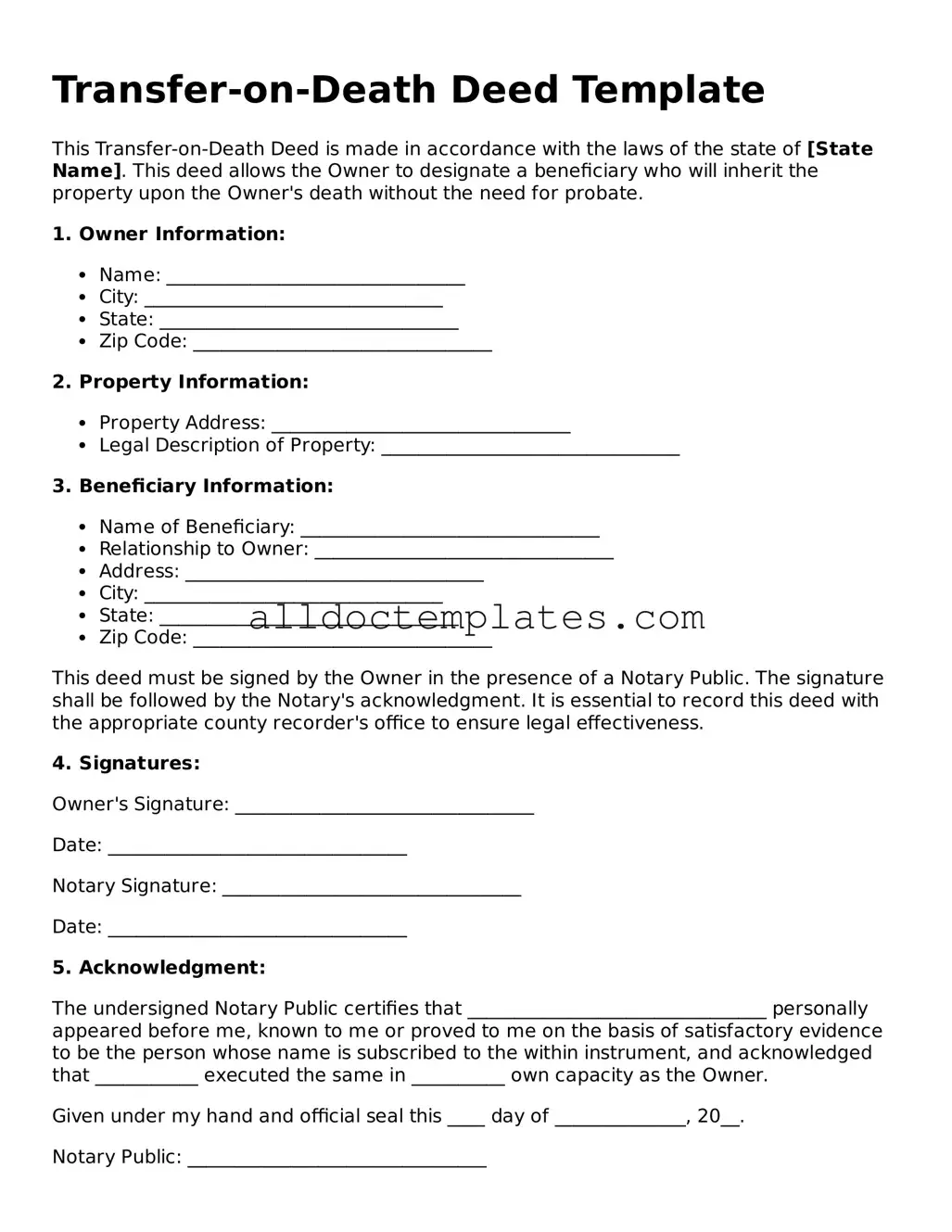Transfer-on-Death Deed Template
This Transfer-on-Death Deed is made in accordance with the laws of the state of [State Name]. This deed allows the Owner to designate a beneficiary who will inherit the property upon the Owner's death without the need for probate.
1. Owner Information:
- Name: ________________________________
- City: ________________________________
- State: ________________________________
- Zip Code: ________________________________
2. Property Information:
- Property Address: ________________________________
- Legal Description of Property: ________________________________
3. Beneficiary Information:
- Name of Beneficiary: ________________________________
- Relationship to Owner: ________________________________
- Address: ________________________________
- City: ________________________________
- State: ________________________________
- Zip Code: ________________________________
This deed must be signed by the Owner in the presence of a Notary Public. The signature shall be followed by the Notary's acknowledgment. It is essential to record this deed with the appropriate county recorder's office to ensure legal effectiveness.
4. Signatures:
Owner's Signature: ________________________________
Date: ________________________________
Notary Signature: ________________________________
Date: ________________________________
5. Acknowledgment:
The undersigned Notary Public certifies that ________________________________ personally appeared before me, known to me or proved to me on the basis of satisfactory evidence to be the person whose name is subscribed to the within instrument, and acknowledged that ___________ executed the same in __________ own capacity as the Owner.
Given under my hand and official seal this ____ day of ______________, 20__.
Notary Public: ________________________________
My Commission Expires: ________________________________
